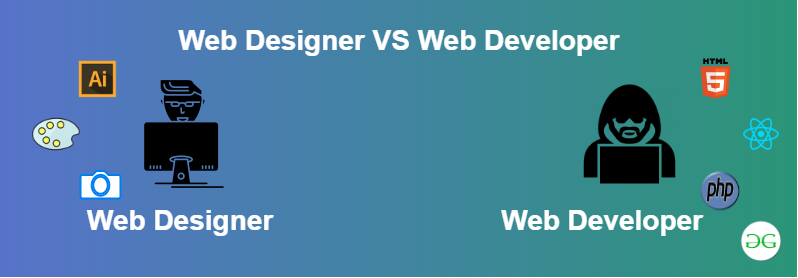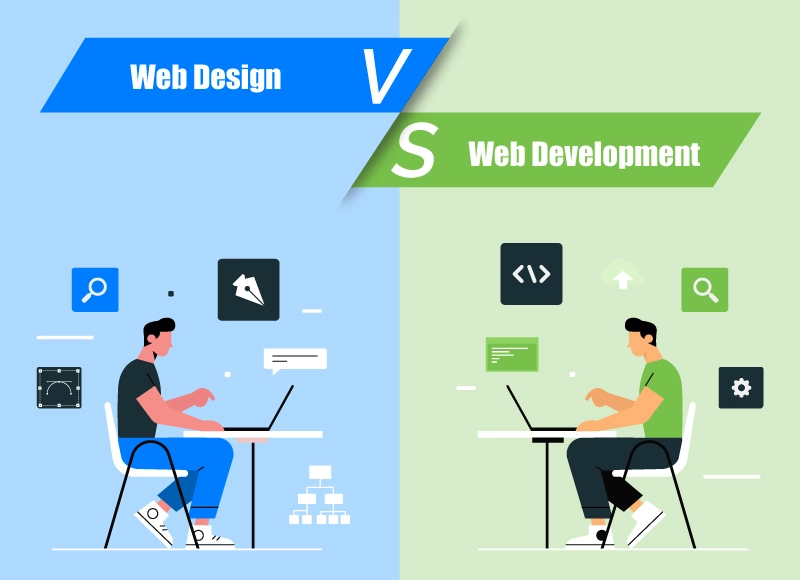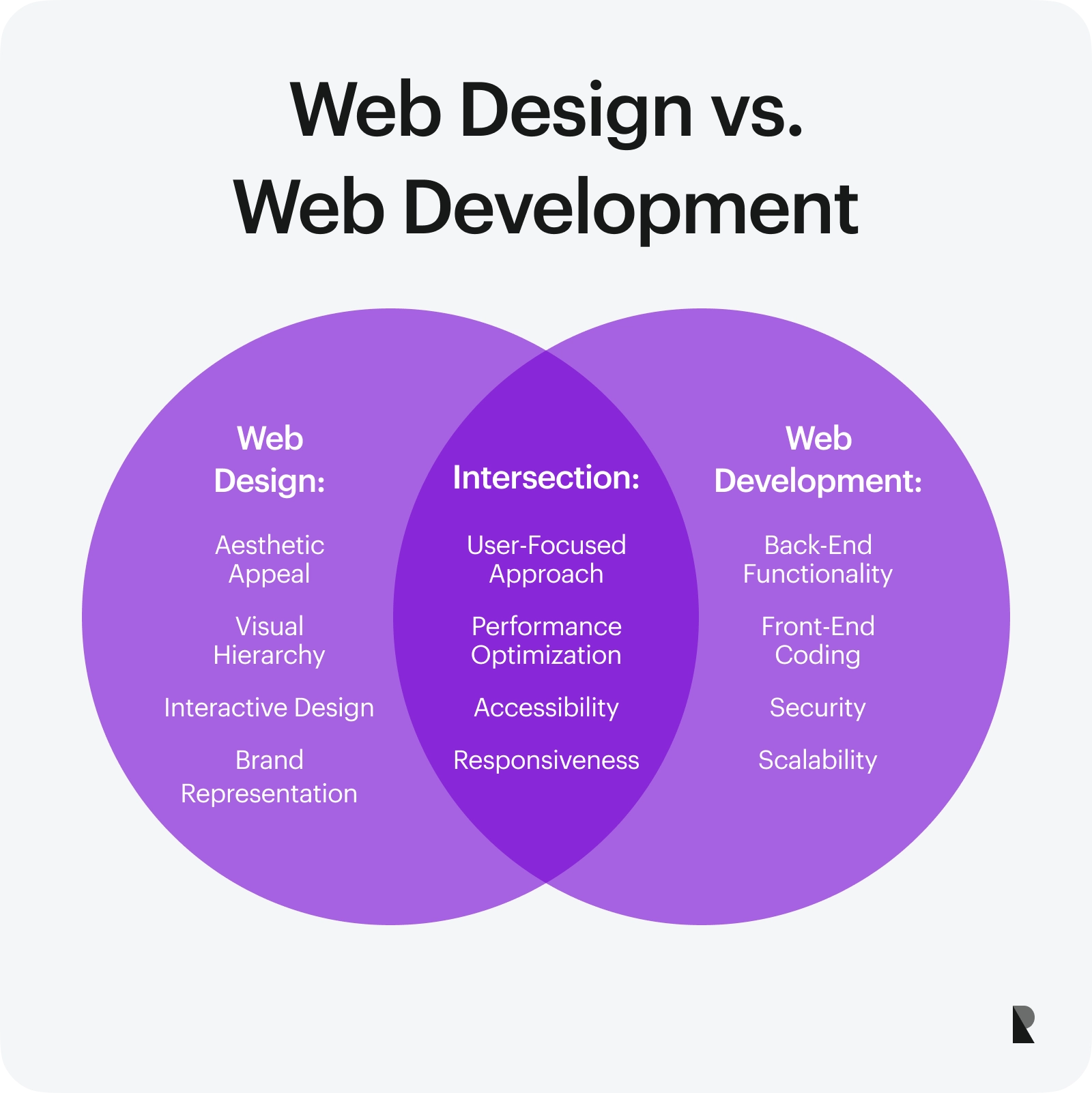The benefits of web development for creating scalable websites
Discovering the Various Kinds Of Website Design and Their One-of-a-kind Benefits
The landscape of website design includes a selection of designs, each offering distinct benefits that cater to various customer needs. Minimal and level designs stress clearness, while receptive and worldly layouts enhance flexibility across devices. Illustrative and typography-driven techniques aim to enhance interaction and psychological vibration. Comprehending these varied types can considerably influence customer experience and brand name understanding. What exists under the surface of these style selections?
Minimalist Website Design

Minimalist website design often includes a limited shade combination and simple typography, which not only enhances appearances but likewise enhances brand identity. The lowered complexity can bring about faster packing times, better enhancing customer fulfillment. Additionally, by minimizing visual clutter, users can involve with web content better, leading to boosted understanding and retention. On the whole, minimal website design promotes a smooth user experience, making it a popular selection for brands intending to convey clarity and professionalism and trust in their on-line existence.
Receptive Web Layout
Responsive Web design has actually ended up being vital in today's electronic landscape, making certain mobile compatibility for users across various tools. This approach substantially improves individual experience by supplying smooth navigation and accessibility, regardless of screen dimension. As even more individuals access the Web on tablet computers and smartphones, the value of responsive design continues to expand.

Mobile Compatibility Relevance
As mobile phone usage continues to rise, making certain sites are compatible with different display dimensions has actually come to be necessary for reliable communication and involvement. Mobile compatibility, typically attained via receptive Web layout, allows sites to adjust perfectly to mobile phones, tablets, and various other tools. This adaptability not just gets to a broader audience yet also improves brand credibility. A site that functions well on mobile devices shows professionalism and interest to user requirements. In enhancement, online search engine prioritize mobile-friendly sites in their positions, making compatibility an essential factor for on the internet presence. By purchasing mobile compatibility, organizations can boost their electronic existence and cater to the growing variety of individuals that access details on the move. Focusing on mobile-responsive design is critical in today's digital landscape.
Improved Customer Experience

Flat Design
Level layout is a minimal strategy to Web layout that emphasizes simpleness and clearness. By getting rid of three-dimensional aspects such as gradients, structures, and darkness, level style creates a visually enticing interface that focuses on material and performance. This design promotes an intuitive navigating experience, as users can promptly recognize essential features and activities without diversion.
Among the main advantages of flat layout is its responsiveness across numerous devices and screen dimensions. Its clean lines and uncomplicated formats adapt effortlessly, making certain a consistent experience for users on mobile, tablet, or desktop systems. Additionally, flat layout commonly incorporates vibrant colors and typography, boosting visual influence and brand acknowledgment.
In addition, the simplicity inherent in flat design results in faster packing times, which adds positively to customer complete satisfaction - web design. On the whole, flat style continues to be a prominent choice for contemporary Web growth, lining up with modern aesthetic preferences while delivering superb functionality
Material Style
Product Design stands for a style language established by Google that concentrates on producing a cohesive and instinctive individual experience throughout electronic systems. This strategy stresses using grid-based formats, responsive computer animations, and depth effects such as lighting and darkness, which aid to develop a feeling of hierarchy and spatial relationships. By simulating the real world, Material Design enables individuals to interact with digital user interfaces in an extra appealing and all-natural way.
Among the essential benefits of Product Style is its versatility across numerous tools and display sizes, making sure a constant experience for users. In addition, it advertises a clear visual language that enhances functionality, making it much easier for individuals to navigate intricate applications. The consolidation of lively colors and strong typography also plays an essential duty in accentuating vital elements, thereby enhancing total customer involvement - web development. Subsequently, Material Layout has come to be a popular option amongst designers seeking to develop practical and aesthetically attractive click here now websites
Typography-Driven Design
Typography-Driven Style focuses on the critical usage of kind to boost the useful and visual elements of a web site. This layout approach prioritizes typefaces, font dimensions, spacing, and power structure to develop visual passion and overview user experience. By carefully selecting typography, designers can share brand name identity and evoke emotions, making the web content much more engaging and easily accessible.
Efficient typography enhances readability and usability, guaranteeing that customers can easily navigate the site and soak up details. The best mix of kind can likewise develop a clear visual power structure, allowing individuals to rapidly identify vital messages and contacts us to activity.
A typography-driven approach can be adjusted to different gadgets, guaranteeing consistency across systems. This flexibility is crucial in today's multi-device landscape, where individual experience is paramount. Inevitably, Typography-Driven Design serves not just as an artistic option but additionally as a practical aspect that substantially impacts a site's performance.
Illustrative Web Style
Illustratory Web layout employs aesthetic narration strategies that can substantially improve customer involvement. By incorporating one-of-a-kind pictures, internet sites can produce a remarkable brand name identity that reverberates with their target market. This strategy not just mesmerizes visitors yet also communicates messages in an aesthetically engaging way.
Visual Narration Strategies
A wide variety of Web developers utilize aesthetic narration techniques to develop appealing and immersive user experiences. This approach incorporates images, format, and typography to narrate a story that resonates with users on a psychological level. By integrating compelling visuals, developers can efficiently share messages and evoke sensations, guiding visitors with a brand's journey. Infographics, animations, and interactive aspects serve to enhance stories, making intricate info extra accessible and unforgettable. Additionally, aesthetic narration can establish a natural brand identification, as constant images and styles enhance core values and messages. Ultimately, this method not only astounds individuals but also cultivates a deeper link with the material, urging expedition and retention. Via competent application, aesthetic storytelling changes common Web experiences into vibrant and purposeful interactions.
Enhancing Individual Interaction
Effective Web layout significantly enhances customer interaction by leveraging illustrative components that draw focus and foster communication. Illustrations can simplify intricate concepts, making them extra remarkable and friendly for users. They damage the dullness of text-heavy web pages, developing visual breaks that welcome exploration. On top of that, distinct illustrations can stimulate feelings, encouraging individuals to link with the material on a much deeper level. Interactive browse around these guys aspects, such as animations or float impacts, can likewise improve interaction by inviting users to participate actively as opposed to passively eating details. This method not only maintains visitors on the site much longer but additionally boosts the possibility of return check outs. Inevitably, efficient illustrative website design changes the customer experience, making it extra pleasurable and impactful.
Branding With Image
Visual aspects play a considerable function in shaping a brand's identification, and pictures are an effective device hereof. Illustratory Web layout allows brands to share their special individuality and values with personalized art work. This technique fosters a much deeper emotional link with the audience, boosting memorability and interaction. By integrating images, brands can distinguish themselves in a congested marketplace, creating a distinct aesthetic story that resonates with their target market. In addition, images can streamline complex ideas and make web content extra obtainable, successfully connecting messages in an engaging manner. On the whole, branding with image not just improves the individual experience however likewise reinforces brand name recognition, making it an important method for services intending to establish a solid on-line presence.
Regularly Asked Questions
Exactly how Do I Pick the Right Web Layout Type for My Company?
To pick the right website design kind for a business, one should evaluate goals, target audience, and industry criteria. Visit This Link Examining customer experience and functionality will assist the choice process for excellent involvement and efficiency.
What Tools Are Ideal for Developing Various Web Layout Designs?
Popular devices for producing varied website design styles include Adobe XD, Figma, Sketch, and WordPress. Each deals distinct features customized to various layout requirements, making it possible for designers to construct useful and aesthetically appealing sites efficiently.
Exactly How Much Does Expert Website Design Usually Cost?
Specialist Web layout commonly costs in between $2,000 and $10,000, depending on complexity, features, and developer expertise. Customized options and recurring upkeep might enhance costs, while layouts can supply more affordable options for less complex projects.
Can I Integrate Multiple Website Design Enters Effectively?
Yes, integrating multiple website design kinds can be effective. By integrating elements from different styles, designers can produce one-of-a-kind, interesting individual experiences that accommodate diverse audiences while enhancing functionality and visual allure.
Just How Do Design Fads Effect User Experience and Interaction?
Design patterns substantially influence user experience and engagement by boosting aesthetic appeal, improving navigation, and cultivating emotional connections - web development. Staying updated with trends allows designers to create instinctive interfaces that reverberate with individuals and motivate extended interactions
Level and minimalist styles highlight quality, while receptive and worldly styles boost flexibility across devices. It might appear counterintuitive, minimalist Web style highlights simpleness to boost user experience. Responsive Web layout plays a necessary role in enhancing user experience by making certain that a web site adjusts seamlessly to different screen sizes and tools. Level design is a minimalist strategy to Web design that emphasizes simpleness and clarity. Product Style stands for a style language developed by Google that focuses on developing a natural and intuitive customer experience throughout digital systems.